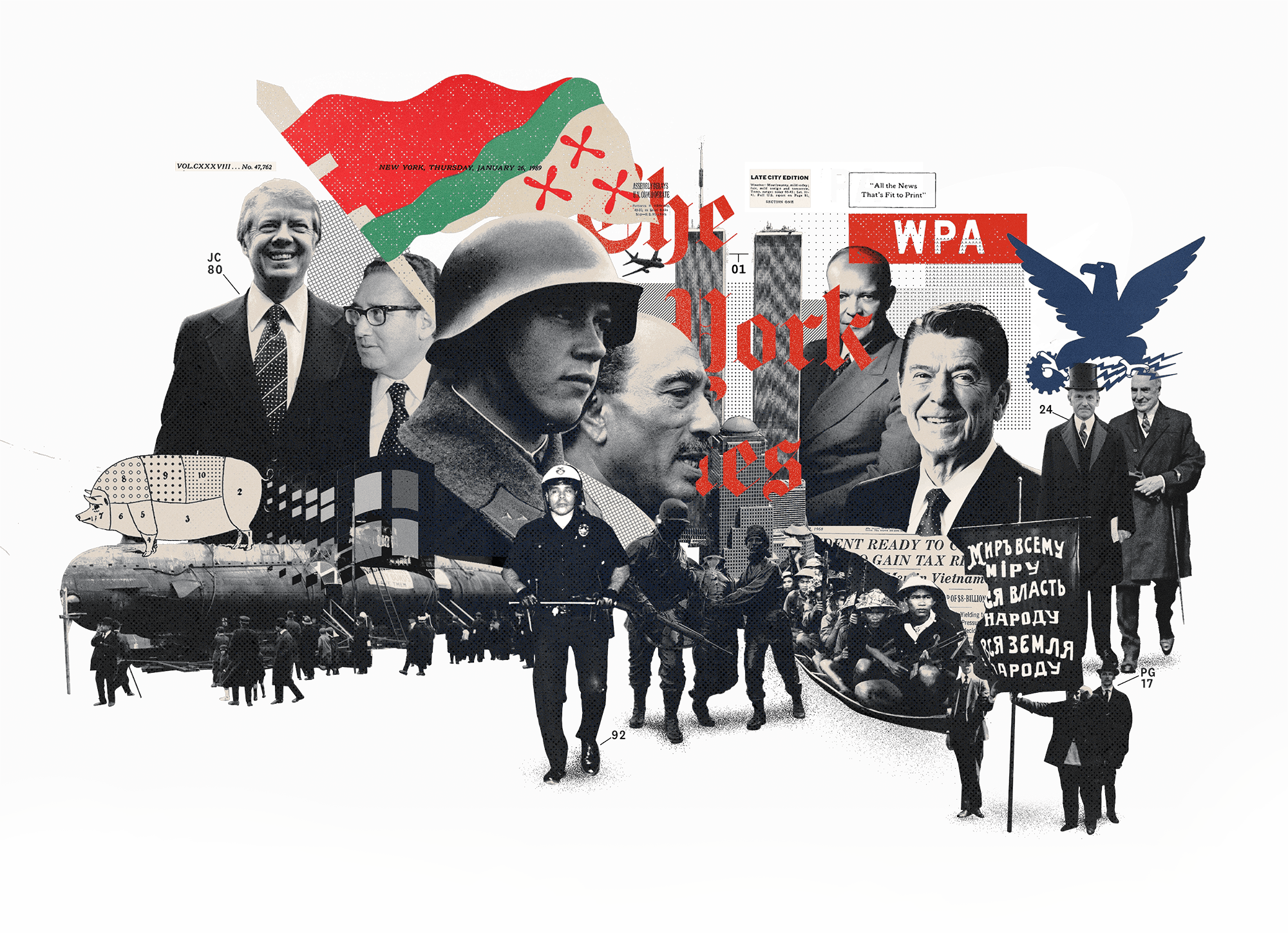
A brief history of the past
100 years
as told through the New York Times archives
Brought to you by
For years, we’ve tried to stay abreast of it all — the school shootings, the shifts in foreign policy, the playoff results, the firings, the appointments, and the rest of the news that streamed across our various screens.
Not this year. We’re in our early 30s, and 2018 marks the first time in our adult lives that we’ve taken a step back from the news cycle. It seems like there are countless fires burning, and each day brings more somber tidings. The flood of updates seems no longer manageable, in large part because the barrage of bad news seems to affect all levels of the international order. The stability of the recent half century has given way to a deep sense of uncertainty and confusion regarding the future.
For months, we’ve wanted some note-waving historian to emerge from the archives, and reassure us that, in fact, there’s no need to worry — we’re living through the same sense of unease that previous generations did during the Nixon administration, the Vietnam War, and the Iranian hostage crisis. But that’s yet, if at all likely, to happen. To gain a more balanced perspective, we decided to do some digging ourselves: below, you can take a tour through the past 100 years as reflected in the pages of one of America’s most-respected newspapers, The New York Times and compare the events of the past year to the tumult of the long 20th century.
For every decade, we’ve summarized the words that most frequently appear in NYT headlines, sizing each word relative to its disproportionate popularity. Selecting each one of these will allow you to see its popularity throughout the past century; you’ll also be able to explore the articles that the NYT published on each of these topics over the years by hovering over each decade in the chart.
Want to focus solely on the countries that dominate headlines? Check out our companion piece The World through the Eyes of the U.S.
1900s
1910s
1920s
1930s
1940s
1950s
1960s
1970s
1980s
1990s
2000s
2010s
1900s
1910s
1920s
1930s
1940s
1950s
1960s
1970s
1980s
1990s
2000s
2010s
These are, of course, far from the sole important events in American history. We’ve failed to include mention of innumerable coups, militaristic bungles, moral and legal battles, and much of what has made up the past century. Nevertheless, we hope that our turn to data in highlighting a number of the most iconic events has helped paint some historical context to the end of this turbulent year. In light of recent social and geopolitical unrest, perhaps it’ll serve as some comfort: our decade’s news may be alarming, but in the long arc of history, far from unique.
Method
In order to derive the terms that were disproportionately emblematic of a particular decade, we compared each decade (e.g., 1960s) to the frequency of terms to a corpus consisting of three decades: the decade at hand, as well as the preceding and following decades (in this case, 1950s, 1960s, 1970s). For the first and last decades, we compared the data to a corpus consisting of their sole neighboring decade and the decade at hand (e.g., we compared the 1900s to a corpus comprising the 1900s and 1910s). Since some words occurring in a particular decade may be incredibly rare in any other decade, we only included words that manifested at least once in every 10,000 words for a specific decade. We also note that 1964 did not have any articles labelled as appearing on page 1, and thus, its events were, unfortunately, minimally covered by our analyses.
A note on language: We included the word “negro” in our analyses because it provides an important historical lens through which to view events like the 1960s Civil Rights Movement. We recognize and respect that the term is offensive without just context.
Finally, an acknowledgement: The staff of the New York Times (many of whom are friends and former colleagues) have done, and continue to perform, tremendously important work. They have long been an inspiration to us (we share their work weekly), and would like to thank them for both their openness (their headlines API archive was instrumental to this project), and their contribution to documenting so much of American history.